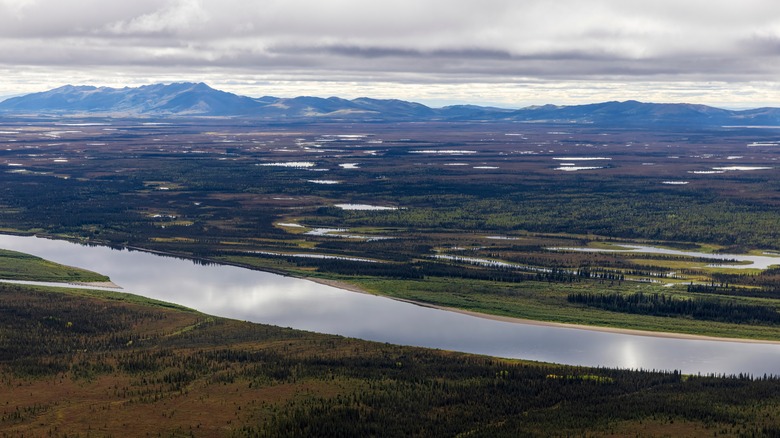The Remote National Park In Alaska Where Arctic Sand Dunes Meet Polar Days And Nights
Alaska is home to some of the most diverse landscapes in the U.S., including 17 of its highest peaks, around 100,000 glaciers, and many volcanoes — including some that have been active within the last 300 years. But perhaps the most surprising landscape is the 30 square miles of soaring sand dunes sitting above the Arctic Circle. You can find these natural wonders in Kobuk Valley National Park, one of the most pristine and remote parks in the United States.
Kobuk Valley is Alaskan in scale, covering an enormous 1.7 million acres. As well as the sand dunes, there are towering peaks, vast areas of tundra, and the slow-moving Kobuk River. In 2023, only around 17,600 visitors reached Kobuk to explore its unique landscape. With no roads, no dedicated trails, and no campgrounds, the park is ideal for those who want to create their own adventure in the Alaskan wilderness. The sand dunes make the perfect place for a hiking and backpacking trip, though there are many other breathtaking areas to explore.
Activities in Kobuk Valley
Once you reach the park, your first stop is likely to be at the Great Kobuk Sand Dunes. The dunes are the most popular spot for camping in the park, though you won't find a full-service campsite. You'll need to bring everything and pack it all out again. After setting up your tent, venture out for a hike across the shifting sands — though be warned, there are no trails, so you'll need orienteering skills.
If you're hoping to see wildlife, you'll have better luck if you take a walk out on the tundra or in the forests. There, black and grizzly bears roam alongside wolves, porcupines, and moose. As a rule, one thing tourists should never do in Alaska is underestimate the wildlife, so bring bear spray and keep a good distance. You can go for more strenuous hikes in the Baird Mountains, where clear, turquoise rivers run beneath the craggy peaks.
The Kobuk River flows gently through the park, offering relatively easy canoeing or kayaking conditions. Along the way, make a stop at Onion Portage (Paatitaaq), a traditional hunting ground for Native Alaskans for centuries. If you happen to be there in spring or fall, you might catch the quarter-of-a-million-strong Western Arctic Caribou Herd migrating north or south. You can camp on the gravel and sandbars along the Kobuk River and cast a line to catch your dinner — whitefish are plentiful.
When and how to visit Kobuk Valley
Kobuk Valley is open to visitors year-round. The question is, do you want to bask under the midnight sun in the summer or chase the northern lights under the cover of a polar night? To experience the longest days, go between June 3 and July 9, when the sun never dips below the horizon. For the best chance of seeing the northern lights, go during the opposite months of the year; December 21 is the shortest day with just 1.5 hours of sunlight. Daytime temperatures in July can reach into the 80-degree Fahrenheit range, but summer can also bring snow and low temperatures. No matter the season, pack plenty of layers and be prepared for changeable weather.
Getting to Kobuk Valley is part of the adventure. If you're hoping to DIY your Alaska vacation, plan to take several planes to the national park. We recommend flying from Anchorage into Kotzebue, which is home to the Northwest Arctic Heritage Center, the visitor center and headquarters of the park. There, you can learn more about Iñupiaq culture and the park's wildlife and geology and get help planning your trip to Kobuk Valley. Alternatively, you might want to fly from Fairbanks to Bettles, which serves as a jumping-off point for visits to both Kobuk Valley and Gates of the Arctic, one of the U.S. national parks that is hardest to see.
Want someone to plan your trip for you? The National Park Service lists providers who can do just that. Several arrange combination float trips to Kobuk and Gates of the Arctic for a true wilderness experience.


